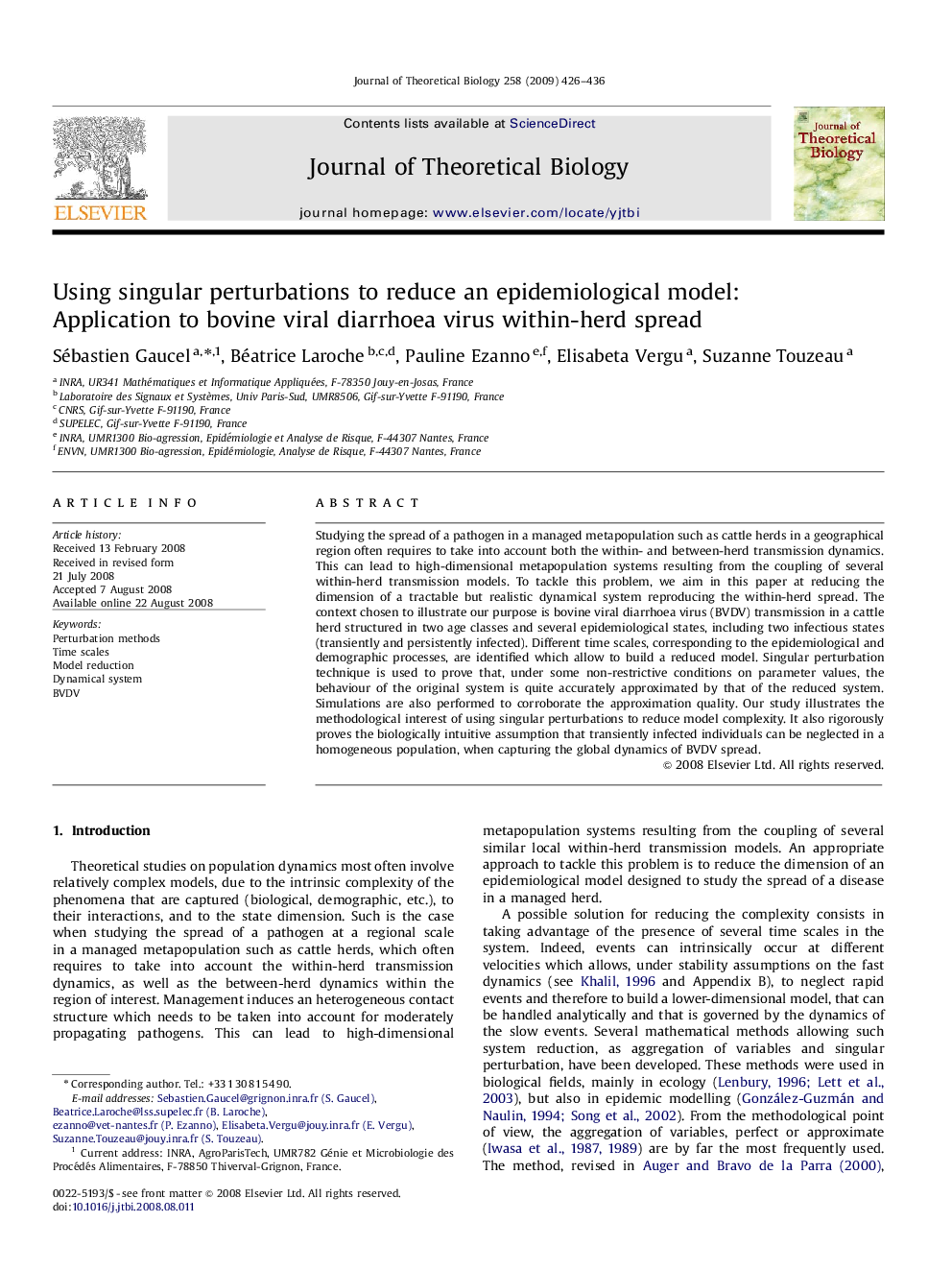| Article ID | Journal | Published Year | Pages | File Type |
|---|---|---|---|---|
| 4497998 | Journal of Theoretical Biology | 2009 | 11 Pages |
Abstract
Studying the spread of a pathogen in a managed metapopulation such as cattle herds in a geographical region often requires to take into account both the within- and between-herd transmission dynamics. This can lead to high-dimensional metapopulation systems resulting from the coupling of several within-herd transmission models. To tackle this problem, we aim in this paper at reducing the dimension of a tractable but realistic dynamical system reproducing the within-herd spread. The context chosen to illustrate our purpose is bovine viral diarrhoea virus (BVDV) transmission in a cattle herd structured in two age classes and several epidemiological states, including two infectious states (transiently and persistently infected). Different time scales, corresponding to the epidemiological and demographic processes, are identified which allow to build a reduced model. Singular perturbation technique is used to prove that, under some non-restrictive conditions on parameter values, the behaviour of the original system is quite accurately approximated by that of the reduced system. Simulations are also performed to corroborate the approximation quality. Our study illustrates the methodological interest of using singular perturbations to reduce model complexity. It also rigorously proves the biologically intuitive assumption that transiently infected individuals can be neglected in a homogeneous population, when capturing the global dynamics of BVDV spread.
Related Topics
Life Sciences
Agricultural and Biological Sciences
Agricultural and Biological Sciences (General)
Authors
Sébastien Gaucel, Béatrice Laroche, Pauline Ezanno, Elisabeta Vergu, Suzanne Touzeau,
